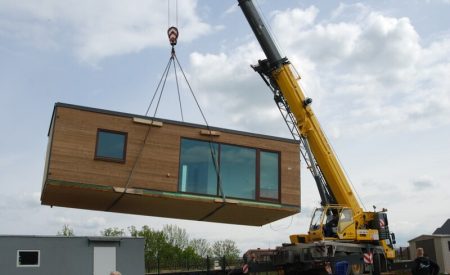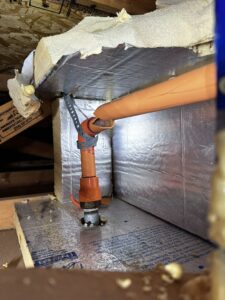The Dreaded Letter
Have you received a plan review letter after submitting your manufactured or factory built home plans for permitting, stating that Automatic Fire Sprinklers in your modular home are required? Like many prospective homeowners, this probably comes as a surprise. Usually the first response from these clients is "I thought the home was ready to go!". Unfortunately this is not always the case. Many factors are involved when planning departments make this determination, and jurisdictions like King County often have a "Fire Flow" checklist, in which your property must meet a certain number of "credits" to omit fire sprinklers from the home. Another valuable resource is the Washington State Labor and Industries Protect My Manufactured Home page, which can tell you what might be required when proceeding with this project.
In this article, we will define the different types of manufactured or off-site bult homes, the options and process of installing fire sprinklers inside of your modular home or manufactured that is being built off-site, and how to get started on moving forward with the process.
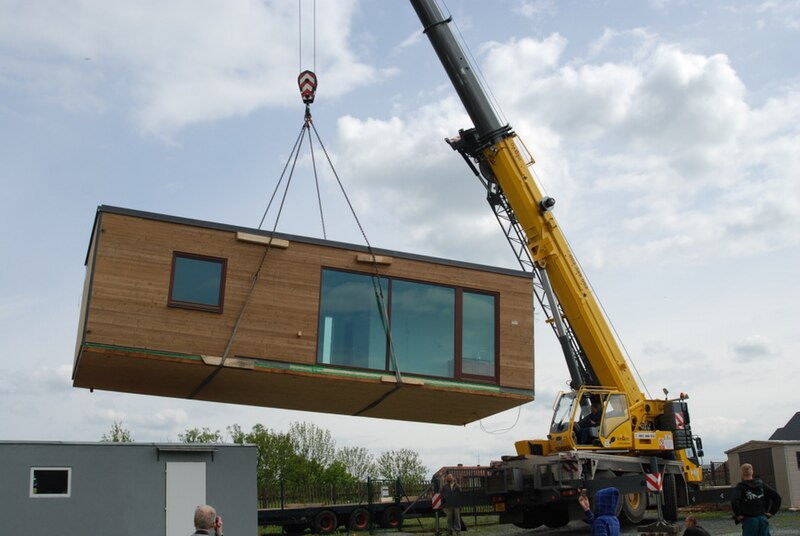
Prefabricated Homes - What are they?
Lets talk about pre-fabricated homes as a whole. A prefabricated home, commonly referred to as a prefab home, is a type of dwelling that is manufactured off-site in advance, usually in standard sections that can be easily shipped and assembled. Some key characteristics and facts about prefabricated homes include:
- Manufacturing Process: Prefab homes are built in a controlled factory environment. This method allows for more efficient building processes and reduces waste.
- Types of Prefab Homes: Prefabricated homes encompass various types, including modular homes, panelized homes, and pre-cut homes. Each type has a slightly different construction and assembly method.
- Quality Control: Since they are built in a factory, prefab homes are subject to rigorous quality control during construction, which can be superior to traditional on-site building methods.
- Customization: Despite being pre-built, many prefab homes offer a range of customization options in terms of layout, design, and finishes.
- Time and Cost Efficiency: Prefab homes can often be constructed more quickly and sometimes more affordably than traditional homes, as the controlled factory environment streamlines the process and minimizes delays due to weather.
- Environmentally Friendly: They often incorporate eco-friendly materials and designs, and the factory process reduces waste and energy usage compared to traditional construction.
- Transport and Assembly: Once manufactured, the home’s components are transported to the final building site and then assembled. The time for assembly can vary but is generally quicker than traditional construction.
- Regulations and Codes: Prefab homes must adhere to the same local building codes as traditional site-built homes. Modular homes, for example, are subject to the same codes as on-site homes, whereas manufactured homes (a type of prefab home) follow federal HUD code. Typically in Washington state, Labor and Industries is responsible for the bulk of the inspections, which are done at the factory. When the home is delivered to its final resting place, the local AHJ will preform the final inspections to ensure the home was finished off properly.
Prefabricated homes offer an alternative to traditional on-site construction, providing potential cost and time savings, consistency in quality, and the possibility of incorporating sustainable building practices.
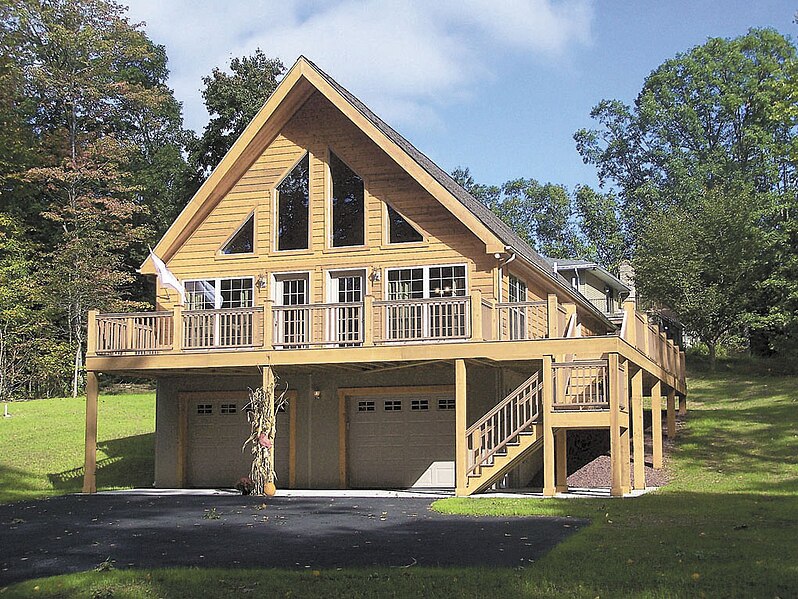
Different Types of Manufactured Homes
Back in the day, there were far less options when it came to off-site built homes. You had mobile homes, and that was about it. These days with the advancement in technologies, and increased pressure and demand to keep housing costs as low as possible, there are many types of off-site built homes. When talking with your realtor, contractor and planning departments, it is important that the definitions and terminologies don't get lost in translation.
Off-site built homes, also known as prefabricated or modular homes, come in various types, each with its own construction method and characteristics. Here are the main types:
- Modular Homes: These are built in modules or sections in a factory setting. The modules are then transported to the site and assembled on a permanent foundation. Modular homes must meet the same local building codes as traditional site-built homes.
- Manufactured Homes: Previously known as mobile homes, manufactured homes are built entirely in a factory and then transported to the site. They are built on a non-removable steel chassis and can be placed on a permanent foundation or left on their chassis. They must comply with the federal HUD building code.
- Panelized Homes: These homes are constructed with pre-made wall sections (panels). The panels are manufactured off-site and then shipped to the build location where they are assembled. Panelized homes allow for quicker construction and can offer more design flexibility.
- Pre-Cut Homes (Kit Homes): In this type of home, all the necessary building materials are pre-cut to the design’s specifications and then shipped to the site for assembly. This can include anything from lumber to the roofing materials.
- Shipping Container Homes: These are made from repurposed shipping containers. They can be used singularly for small residences or combined and stacked for larger, more complex designs.
- Tiny Homes: A trend that focuses on small, compact living spaces that can be built off-site and transported to a location. They often emphasize eco-friendly and sustainable living.
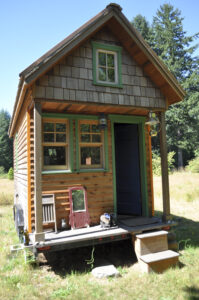
Fire Sprinklers in Prefabricated or Modular Homes
We get a lot of questions on where to even start with installing fire sprinklers in prefabricated homes. What is the process? How much does it cost? Things of that nature. Empire Fire Protection is a leading residential fire sprinkler contractor in Washington State, and we have seen just about everything. Let's go over some of the options, as the process can be different depending on the manufacturer of the home.
- Option 1: Install Sprinklers at the Factory - with our Team
- Fire Sprinklers in modular homes are installed at the factory by our team, with our design, and we connect the system to the water supply in a closet or garage later (and any sections of the home together if it is a modular home) when the home is on site. Labor and Industries does the cover inspections at the factory. The local Fire Marshal preforms the final inspection on site. Depending on the factories location, this is a preferred approach.
- Option 2: Install Sprinklers at the Factory - with the Factory's Team
- Sprinklers are installed at the factory by the factories team, with our design, and our team connects the system to the water supply in a closet or garage later (and any sections of the home together if it is a modular home), when the home is on site. Labor and Industries does the cover inspections at the factory. The local Fire Marshal preforms the final inspection on site. When the factory is located far away from our service area, this is a preferred approach.
- Option 3: Install Sprinklers on Site
- This is the least preferred method as you are essentially doing a retrofit at this point, and the costs are increased on the overall project by a substantial amount. The modular or manufactured home is completed at the factory as normal. When it is shipped on site and placed, sheetrock is then opened back up (at the locations of the sprinkler system), insulation is removed, and we move forward with install. When the system receives its cover inspection (after insulation tenting is complete), your general contractor can proceed with sheetrock repair and paint. Once everything is back to how it came on site, we trim out the sprinklers and call for final inspection.
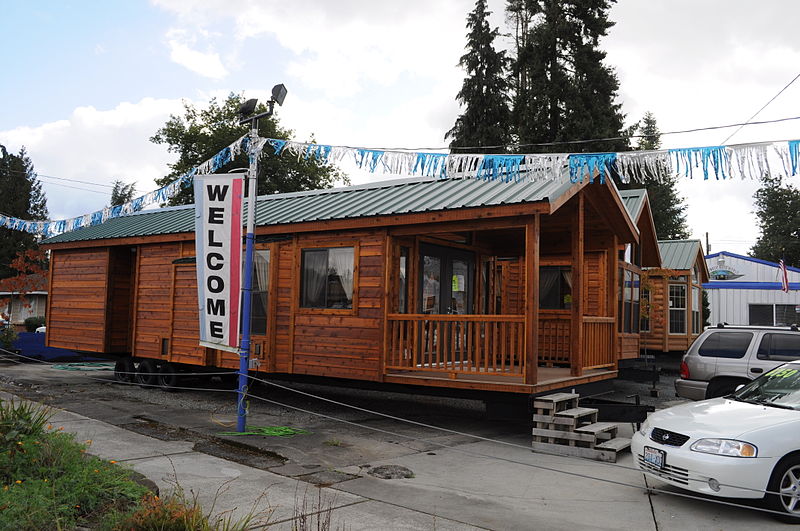
Where to Start when Needing Fire Sprinklers in Modular Homes ?
The process should look something along the lines of:
- Call the home manufacturer/ broker and see if they can have fire sprinklers installed at the factory.
- Ask if they have a team on site that can install them, or if the sprinkler contractor you are going to use for the permitting and final connection will need to install them. (This is important to get you an accurate price estimate) Also ask where the facility is located if the sprinkler contractor is going to be installing them.
- If they can’t accommodate / the home is already built, you will need a general contractor to assist with opening up ceilings to accommodate sprinkler installation.
- Once you know this, contact our team to get an accurate estimate.
- Design can begin and permitting can be started.
- When permits are in place, installation of fire sprinklers in your modular home can begin at the factory, and Labor and Industries will sign off on the overhead piping before ceiling cover.
- When the home is delivered on site, our team will assist in connecting the overhead pipes together (If the home is in multiple pieces), along with connecting to the incoming supply.
- Local Fire Marshal will do the final inspection once everything is connected and the system is complete.
While the process is not complex to our team, it may be overwhelming to somebody trying to navigate these waters for the first time. Give us a call or send us an email and we can assist you in the process.
Important Information for Fire Sprinklers in Modular Homes
Some important things your fire sprinkler contractor will need to know are:
- What size is the water meter and incoming supply line to the house?
- 95% of the time for fire sprinklers in modular homes, we will require a 1” meter and 1.25” supply line minimum. There are times we are able to get smaller sprinklers to work, with smaller meters and supply piping, but the amount of sprinklers will drastically increase, resulting in a much more expensive install. When we price the project we call the local water department and get fire flow information as well, to verify the water pressure is adequate to supply the system. If it is not adequate we would need to look at a pump and tank to supply the system. If you are on a well, your well pump information is needed to ensure the pressure and flow are adequate.
- Timeline - What point is the home at in its process?
- If the prefabricated home is leaving the factory the day you call us, we need to know this information as we really need to get moving in order to accommodate a speedy installation. On the other hand, if it hasn't begun being fabricated yet, we have ample time to sort out any details and work with the factory to accommodate the most cost effective approach.
Final Thoughts
While it may have come as a surprise that fire sprinklers were not mentioned until plan review for your modular home project, know that this is not uncommon. Washington State allows for each local jurisdiction to set their own rules and regulations, at times making it complex and confusing- even for us fire sprinkler contractors to keep things straight! It is best to start working with a fire sprinkler subcontractor as soon as possible, in order to keep costs low and avoid doing things twice. We hope that this informative guide sheds some light on the process, and as always, if you need assistance on your next project- contact us to get started.

